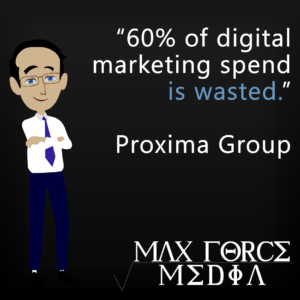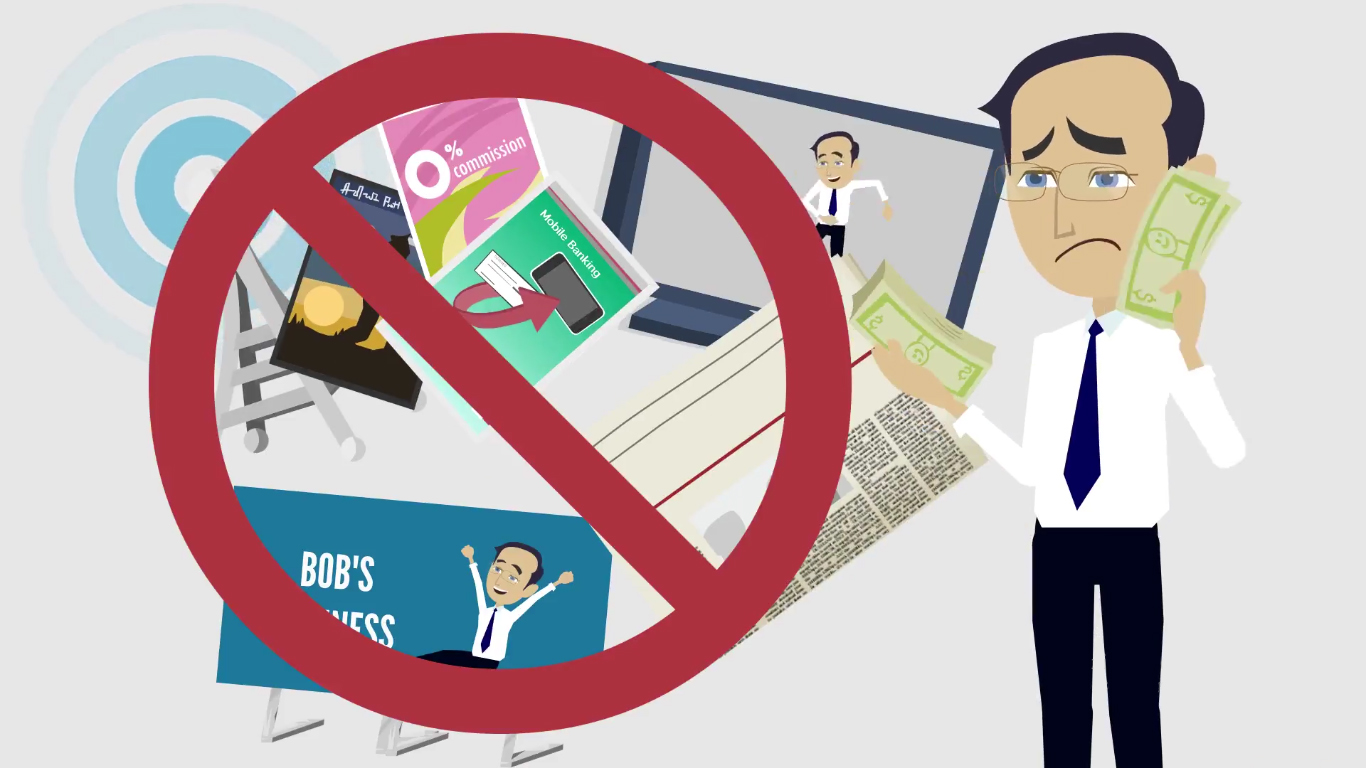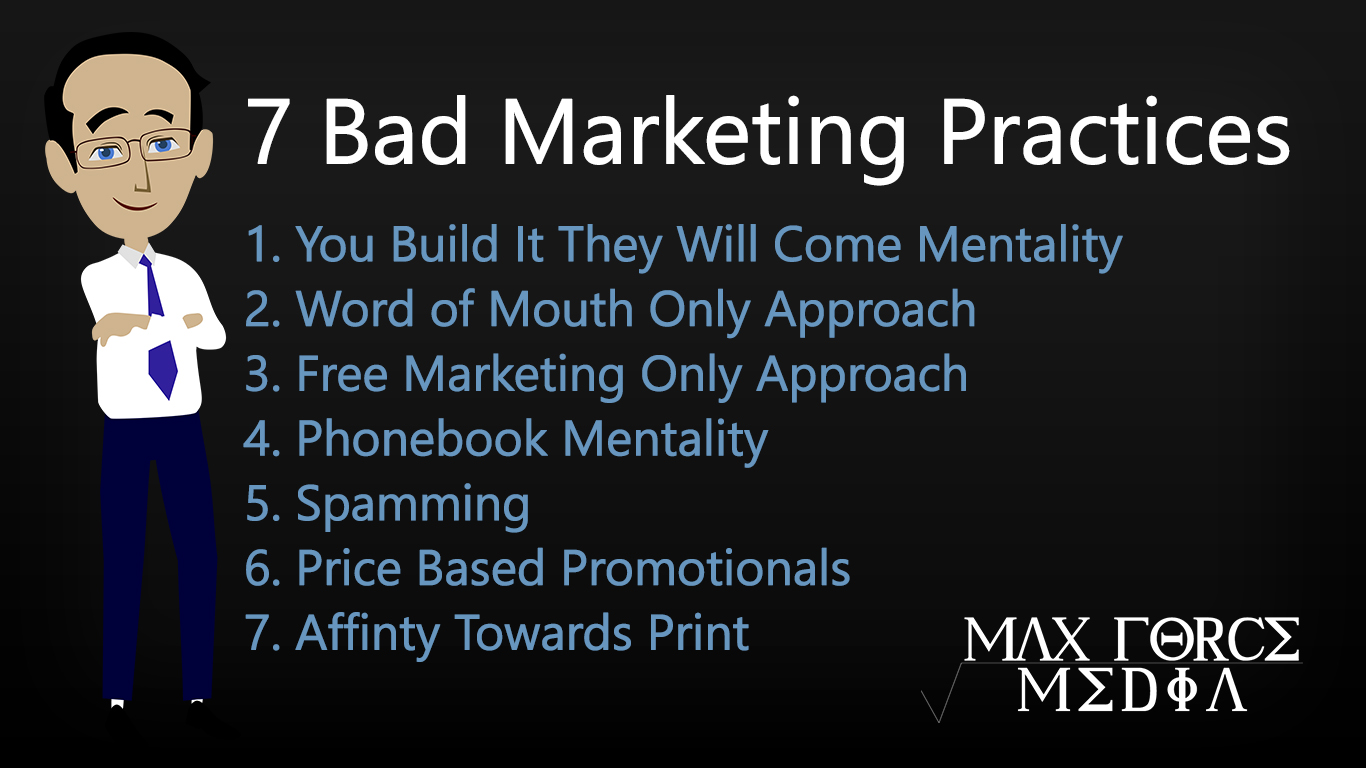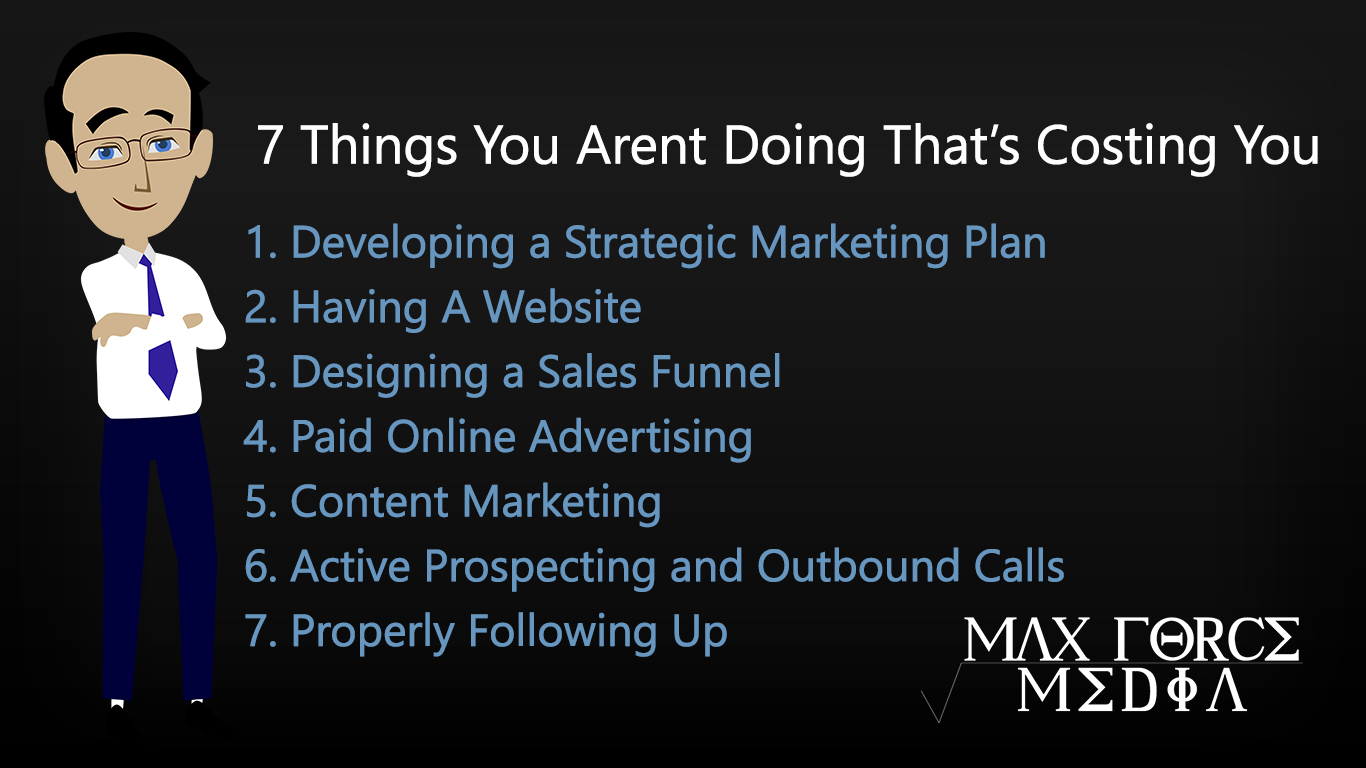Before I start, I’d like to say that none of these methods are completely dead. The main idea of this post is to say that the money you are spending on these mediums of advertising, can yield a greater ROI if spent elsewhere. Sometimes, all of these methods can be very effective if you execute correctly. However, there are still some disadvantages that just can’t be avoided with a few of these.
Direct Mail and print flyers-
Direct mail and print flyers are very common types of advertising used by companies. They are better than newspaper and magazines because you can generally know how many people your marketing materials actually reached. Especially when you have someone handing out flyers and business cards in person, you know the exact number. There are a few limitations with the print approach. The first being the cost. First 5000 high quality postcard sized flyers, its typically costs between $250-$500. And if you’re doing direct mail, you can ad an additional $2000- $3000 for postage to mail them out. The second problem is that the targeting is limited with direct mail, and even more so with personally distributed materials. Certain businesses like restaurants and grocery stores can do pretty well with direct mail because they can target people within a general radius of their location and benefit from brand awareness and not have to focus so much on a direct response ROI because everyone eats and buys food. It takes a bit more creativity to target people using personally distributed marketing materials which we’ll have to discuss at a later time. Another limitation is that fact that you’re spending way more per flyer viewed on average than you would per click or per view using any form of advertising online.
TV Advertising-

Television advertising isn’t for the faint at heart, nor is it for low budgets. The average small business probably wont get around to using TV as a method of lead generation because the cost is simply too high, Which is probably the biggest drawback with TV ads. Not to mention that this is another medium in which performance just cant be tracked. If if you can track how many televisions the ads reached, you still cant track how many people actually sat through the commercial instead of running to the kitchen of the bathroom when the show or movie went to break. On top of all of this, TV is being replaced by the internet.
YouTube said that its worldwide viewers are now watching more than 1 billion hours of videos a day, on pace to eclipse total US TV viewership over the next few years, a milestone facilitated by the Google aggressive embrace of artificial intelligence to recommend videos. By comparison, Americans watch 1.25 billion hours of live and recorded TV per day according to Nielsen, a figure that has been steadily dropping in recent years. Facebook and Netflix said in January 2016 that users watch 100 million hours and 116 million hours, respectively, of video daily on their platforms. Another useful statistic is that YouTube now reaches more 18-to-49-year-olds than any network — broadcast or cable,” according to Youtube CEO, Wojcicki. “In fact, we reach more 18-to-49-year-olds during prime time than the top 10 TV shows combined.”
So what this means is, there so much data to support how and why the internet is surpassing TV in watched hours, we’d have to write another article. But the main takeaway is that you can slide your ad or “commercial” before, during, or after any number of relevant online videos. Instead of paying tens of thousands to millions of dollars, you can just pay $1-$5 per click respectively.
Radio–
 Like TV, the two main problems is that there are other platforms taking the viewership as well as the few people still listing to FM/AM radio don’t like to stick around for the commercials. According to research, listeners of AM/FM radio change stations about 22 times per commute. Pandora says drivers know that radio stations often play 10 or more commercials in a row. “They also know they can avoid them with a simple push of a preset. Seven out of 10 commuters report they don’t listen to the full commercial break, and nearly half of them claim they don’t even last through the first commercial. Satellite radio gets significantly less switching (8 times per commute) than FM/AM radio. At the end of the day, to advertise on these platforms, you will pay thousands for a 15- 30 slot with no way to tell how may people actually heard you ads. Unless you have millions of dollars and only want to focus on a branding campaign, there are more effective places to advertise.
Like TV, the two main problems is that there are other platforms taking the viewership as well as the few people still listing to FM/AM radio don’t like to stick around for the commercials. According to research, listeners of AM/FM radio change stations about 22 times per commute. Pandora says drivers know that radio stations often play 10 or more commercials in a row. “They also know they can avoid them with a simple push of a preset. Seven out of 10 commuters report they don’t listen to the full commercial break, and nearly half of them claim they don’t even last through the first commercial. Satellite radio gets significantly less switching (8 times per commute) than FM/AM radio. At the end of the day, to advertise on these platforms, you will pay thousands for a 15- 30 slot with no way to tell how may people actually heard you ads. Unless you have millions of dollars and only want to focus on a branding campaign, there are more effective places to advertise.
Print Newspaper Ads & Magazine-
These are probably by far the least effective for a few reasons. To start, with most print ads, you can’t track how many people read or even see your ads. People selling you these spaces can only quote how many subscribers they have or how large their distribution is. Magazine ads can be quite expensive, and has the same problem that newspapers have. Newspapers will be harder to target a specific audience because the content though it can be said that its probably an older audience who still reads newspapers. The good thing about newspapers is that this periodical is locally distributed, so if you have a local service, you can benefit this way with newspaper advertising. Magazines offer a bit more audience selection but the other challenges are still present, such as costing thousands for an ad that can’t track how many viewers it receives. Magazine and print ads are good for people with very large budgets who are looking to do branding and are not in need of a direct response type of ROI.
Not Targeting Online Spending-
The beauty of online advertising is that fact that you can break your spending down into daily budgets as low as $5 a day, and can pay for clicks individually, or 1000 views at a time. Being that online advertising is new territory for many, it can seem intimidating and easily avoidable. The rest of these tips will help you overcome beginner mistakes.
The few companies who do muster up the courage to venture into the online advertising space usually go at it blindly in a few ways. The first of which is not targeting. There are a few ways to target potential customers depending on your product. Without going into too much detail, companies think that online ads aren’t effective because they spend so much money and get little or no return. This isn’t because the platform is ineffective, but because these companies aren’t properly using them. If you have a local window repair service, and you setup and ad account and don’t target the local radius that you service, you will easily blow thorough your daily budget within a few hours and not even get 1 click from a potential customer. This is just one example of how not targeting online spending can be a waste of money.

Not Tracking Online Spending-
Similar to not targeting online spending, not tracking online spending can have the same effect. If you don’t know whats happening after launching an online campaign, you can’t differentiate between what’s working and what’s not. This is especially important for people with multiple products, or using multiple platforms for traffic. You can have social media traffic, social media ads, search ads, display ads, email, and other direct mail campaigns, mobile ads all going at the same time. If you don’t know where the good traffic is coming from and where the useless traffic is, you’ll be wasting money on the traffic that isn’t performing which could be spent on traffic that converts into sales. Without tracking the performance of your ads, it will be impossible to optimize your campaigns afterwards.
Not Optimizing Online Spending-
Lets say you have a campaign that costs you $5000 a month in ad spend and it generates you enough leads and converts into $6000 worth of sales. Let’s say that $5000 is divided between 5 channels; Google search, Google display, Facebook ads, email mail outs and direct mail. Lets say you spend $1000 on each of them in a 30 days period to test. Let’s say you have tracking setup on all of them and the direct mail campaign is sent to a customer landing page to determine where the traffic came from.
Let’s use a hypothetical campaign. This is how you would determining effectiveness of ad spend and optimize spending.
At the end of 30 days the results are as follows, assuming you have a $500 average sale price:
Google search- Leads: 50 Sales: 5 ($2500)
Google display: Leads: 25 Sales: 3 ($1500)
Facebook ads: Leads: 40 Sales: 4 ($2000)
Email Mail-out: Leads 20 Sales: 2 ($1000)
Direct mail- Leads: 10 Sales: 1 ($500)
As you can see the profitable campaigns were the Google and Facebook campaigns. The email campaign broke even and has the potential to become profitable because email is more of an investment, since you can continue to email your email list over time depending on the nature of the product or service you are selling. The direct-mail campaign was not profitable at all, but instead was a $500 loss.
So for the next month, you’d want to divide that $5000 ad spend according to the profitability of the first test.
So we’d personally recommend the following budget to optimize ad spend effectiveness:
Google search- $2000
Google display: $1000
Facebook ads: $1500
Email Mailout: $500
This budget assumes that $2000 on Google search is the largest reach you can acquire for the money. If there was more room to scale, then we’d allocate more money to that budget as well.
There are many strategies to use when advertising online and it will depend on the KPIs, goals and results of each individual company. I hope this article gave you a general understanding of how to go about allocating your advertising budget.
For a free consultation, please give us a call at 888 577 5668 or just visit http://MaxForceMedia.Com/Contact





Tell Us What You Think